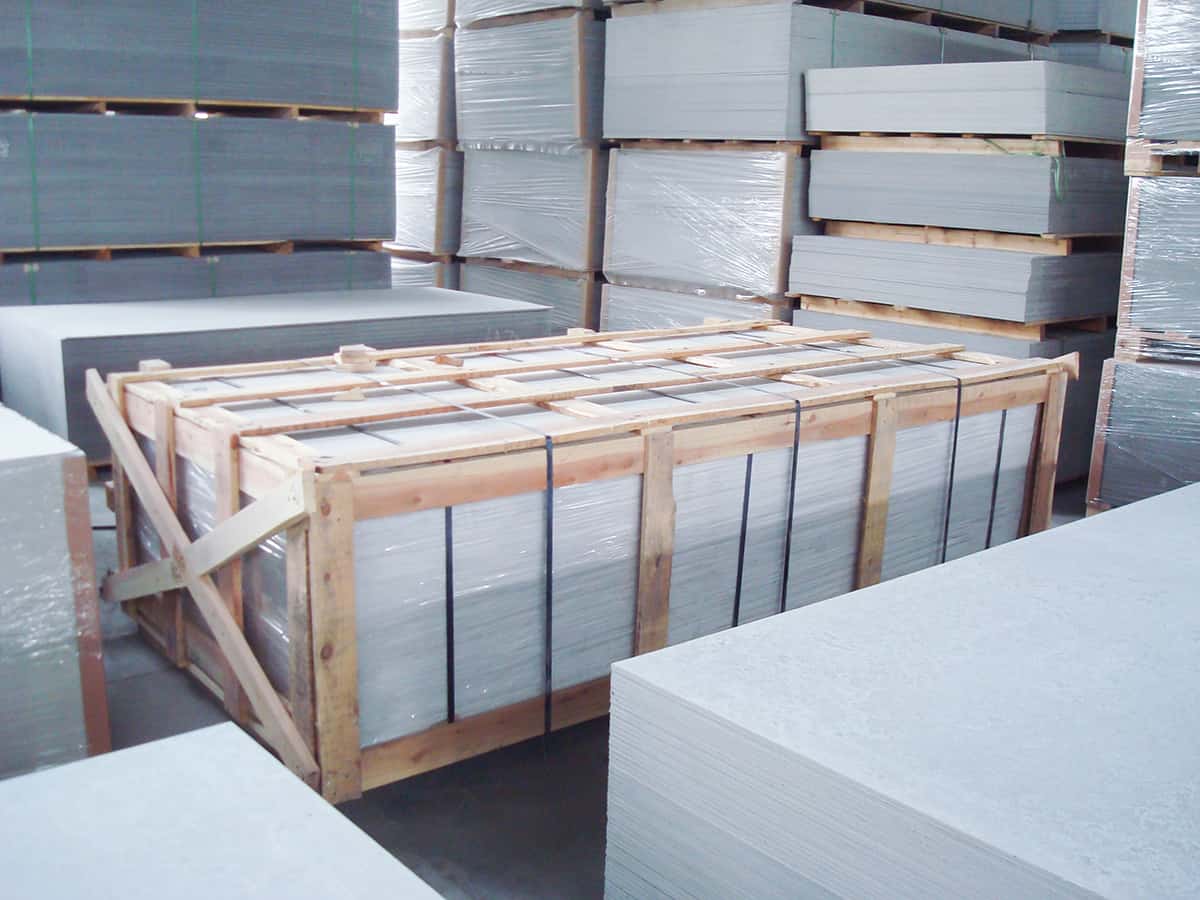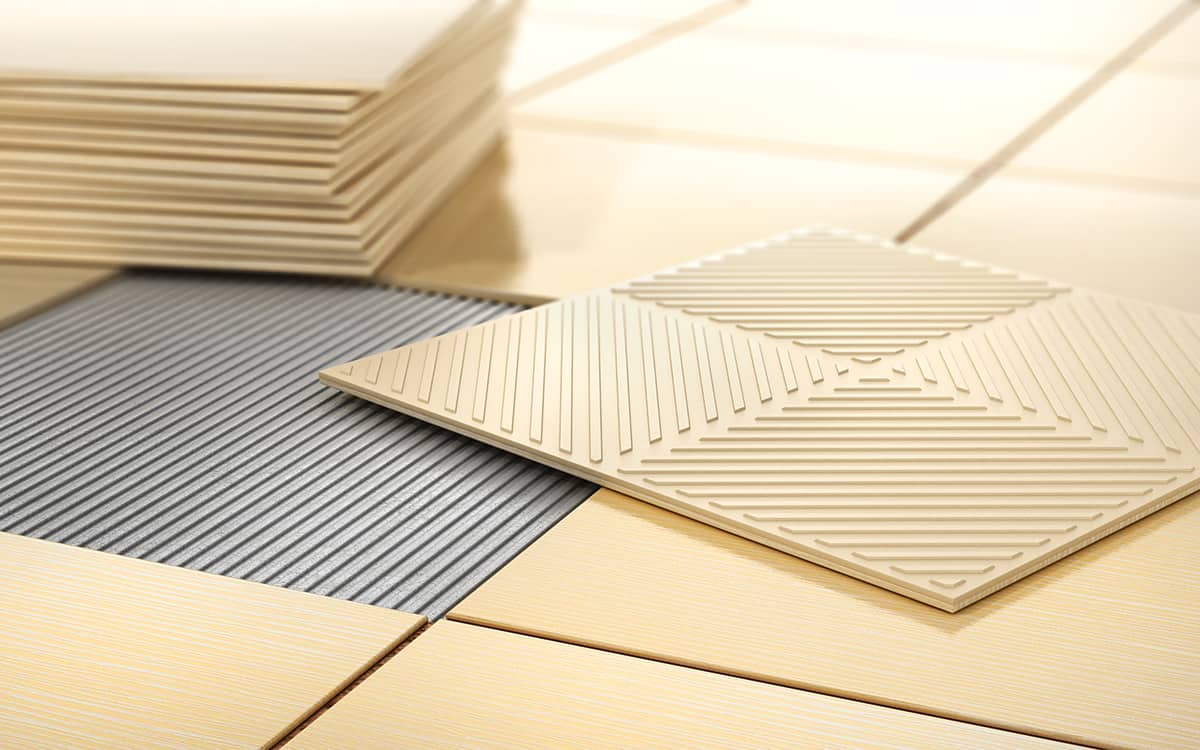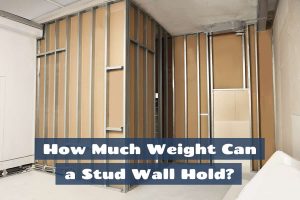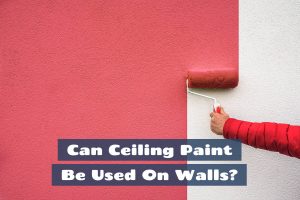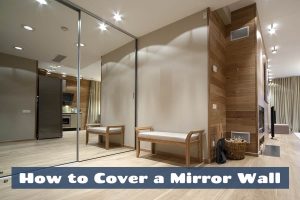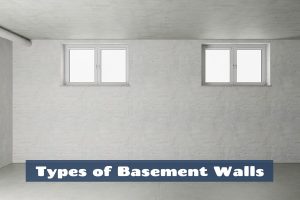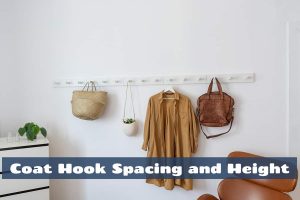Hardibacker and Wonderboard are both types of backer board, also known as cement board, which form the water-resistant surface underneath the tile in building projects. Both of these brands have some great advantages, though each one is better suited to a certain type of project.
Here, we will look at the differences between these two types of backer boards and detail the pros and cons of each one.
What is a Backer Board?
Backer board also goes by the name of cement board. It is a type of sheeting material that should be installed underneath all tiles in interior property construction that may come into contact with water.
Builders call these the ‘wet areas’ of a property. Consider backer board as the water-resistant alternative to drywall. As drywall has some wood in its composition, it is susceptible to rotting if it comes into contact with water.
As moisture can penetrate through some types of tiles and grout over time or seep through any gaps in grout, drywall would be a poor choice of the surface underneath the tile because you would end up with a mold and rot problem that could cause health implications, as well as weaken the structural integrity of the room.
Backer board, by comparison, does not contain any wood or any other type of organic material, and hence it is very resistant to rot and mold. This makes it a much better choice in any area of the home where there are tiles that come into contact with water.
Common places to use backer board are beneath tile floors in bathrooms and kitchens and behind wall tiles in shower cubicles or on kitchen splashbacks. Backer board is also recommended underneath tile floors in entryways or in laundry rooms because if the washing machine leaks or rain seeps in through the front door, the integrity of the floor will be protected.
Backer board comes in standard sheet sizes that are slightly smaller than drywall. Drywall is generally available in 4 foot by 8-foot sheets, while backer board sheets measure 3 feet by 5 feet. They are available in a variety of different thickness sizes, as different applications will require a different thickness.
Backsplashes in kitchens will require backer boards with a thickness of a quarter-inch, while for flooring, you would need a backer board with a thickness of at least a half-inch over plywood subflooring.
For walls or ceilings that are going to be tiled, such as in a bathroom or laundry room, use a backer board with a thickness of half an inch or ⅝ of an inch. Countertops made from tile will also require a backer board surface, with a thickness of at least a quarter-inch over exterior grade plywood.
Hardibacker Boards
Hardibacker boards are one of the most popular types of backer boards. They are made from a mixture of Portland cement and cellulose fibers, which give it a much lighter weight compared with traditional cement board that is made purely from cement.
If you are working alone, then the lightweight quality of Hardibacker is a huge bonus because it makes it so much easier to work with. It will be easier to carry from a truck into the home and easier to maneuver into position in the room you’re working in.
The composition of Hardibacker makes it really easy to cut; it is much less brittle and therefore much less prone to crumbling when being cut into smaller parts. This is particularly important when working in a bathroom because you don’t want chunks of cement breaking away from the backer board and scratching your bathtub or sink.
Hardibacker boards are water-resistant, which is great for tiled areas that do not come into contact with heavy amounts of water, such as a kitchen floor or backsplash. However, for bathroom floors or tiled walls in shower cubicles, the standard Hardibacker boards are not the most superior.
For a completely waterproof quality, look at other types of cement boards, or consider the Hardibacker HydroDefense board, which is waterproof. Hardibacker is considered to be the easiest type of backer board to work with; however, it can require studs to be positioned in non-standard spacing in some applications, which may put off inexperienced users.
Pros and Cons of Hardibacker
Pros
- Lightweight
- Easy to install
- Easy to cut
- Resistant to crumbling
- Water-resistant
- Waterproof option available
Cons
- Standard board not fully waterproof
- Not suitable for outdoor use
- Can require non-standard stud spacing
Wonderboard
Wonderboard is another excellent choice of backer board, which is suitable for both indoor and outdoor applications. This is slightly more durable than Hardibacker because it is fully waterproof, which is why it is recommended for outdoor use because it will be able to completely prevent moisture absorption and, therefore, will be unable to rot or grow mold.
Wonderboard is made from a cement mixture with mesh support. It has a composition that is most similar to traditional cement board, so if you are used to working with cement board, then Wonderboard would be an easy transition as it is very similar to work with.
The mesh reinforcement of Wonderboard does make it quite difficult to cut, and you may require special blades to deal with this. Like cement boards, Wonderboard does have a tendency to crumble when being cut into smaller pieces, so take care when cutting that some loose pieces of concrete don’t fall onto your shower tray and scratch it.
The cement mix that is the base for Wonderboard means that it is considerably heavier than Hardibacker, so you will benefit from having someone else on your team to help with lifting; otherwise, this could be difficult and awkward.
Wonderboard is slightly less expensive than Hardibacker, with a price difference of around $2 per board, depending on where you buy the boards from. Although this is a very minor price difference, it could soon add up if you had a large surface area to cover.
Pros and Cons of Wonderboard
Pros
- Waterproof
- Suitable for indoor and outdoor use
- Inexpensive
- Similar to traditional cement board
Cons
- Difficult to cut
- Prone to crumbling
- Heavy
- Flexible
Hardibacker and Wonderboard Compared
Hardibacker and Wonderboard are both solid choices of backer board for residential tile installation projects. However, depending on the type of project you are working on, along with your experience, there might be a specific board that will be better for you.
Working alone
If you are working alone, then Hardibacker is going to be a great choice because it is lightweight, making it much easier to lift and maneuver and generally resulting in an easier project all around. The lightweight quality of Hardibacker also makes it the best choice if you struggle to lift heavy items or want to avoid strain or injury.
Surface area
If you are covering a large surface area, then Wonderboard is a good choice because it is the most durable option, and it is likely that you won’t need to cut it down very much. As a heavy and more solid type of sheet, Wonderboard can be a better foundation for large areas like kitchen floors.
When working on smaller spaces such as a backsplash, then Hardibacker is the better option. This is because it is so much easier to cut, and it also won’t crumble and cause damage to your room. Wonderboard can be very tricky to cut, so when working on smaller projects that require a lot of the boards to be cut down, this can become very frustrating and tiresome.
Price
Both Hardibacker and Wonderboard cost a similar amount; however, if you are concerned about price and want to save every dollar that you can, then Wonderboard is typically a few dollars cheaper. This could add up to a good saving if you are going to need a lot of boards to complete your project.
Interior or exterior project
Wonderboard is suitable for use on both indoor and outdoor projects, while Hardibacker is purely for indoor projects. This is because Hardibacker is slightly less durable and is water-resistant as opposed to waterproof like Wonderboard.
Both of these types of backer board are a good choice for interior projects, but if you are working on an outdoor area such as a ceramic tiled patio area, then Wonderboard is absolutely the best option.
Moisture levels
Everything in the Wonderboard range is waterproof, while standard Hardibacker boards are water-resistant. If you are tiling an area that experiences high moisture levels, then you may have more peace of mind with Wonderboard.
That being said, Hardibacker is a very popular choice in bathrooms where moisture levels are typically high, and it is still expected to perform very well. Despite being water-resistant rather than waterproof, Hardibacker features a mold-blocking additive.
You could also choose to coat it with waterproof sealants if you prefer to work with Hardibacker but are concerned about the possibility of it absorbing moisture. For a waterproof version of Hardibacker, opt for the Hardibacker HydroDefense board.
When considering your needs for a tile installation project, you should also know the comparison between Durock Vs. Hardiebacker, check out our guide ‘Durock Vs. Hardiebacker: Which Should You Choose? ‘ for further details
